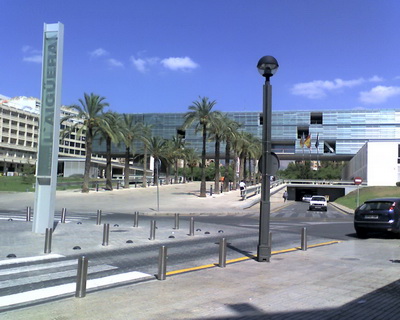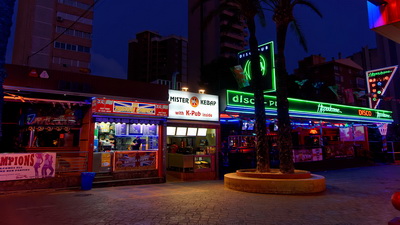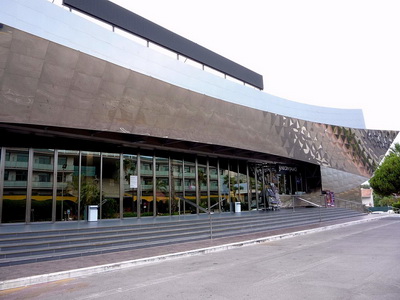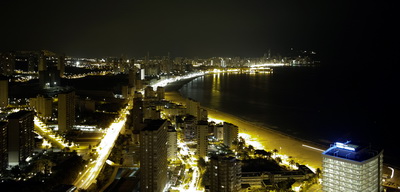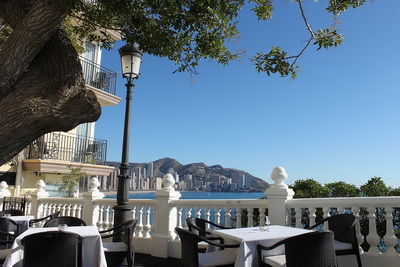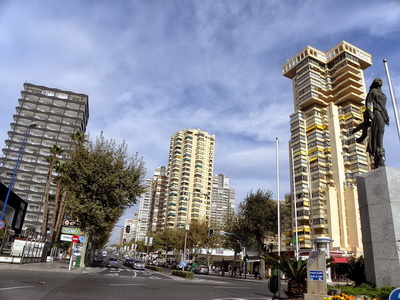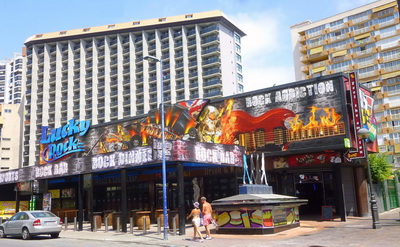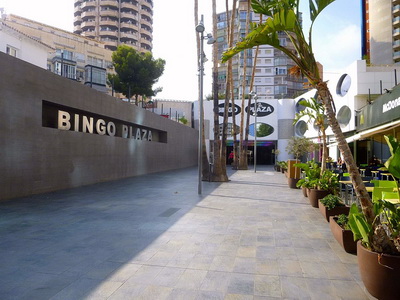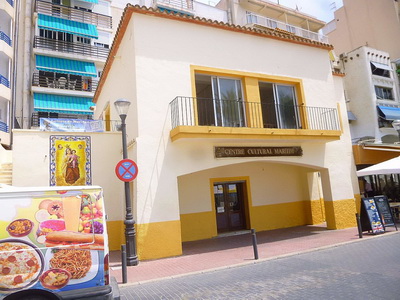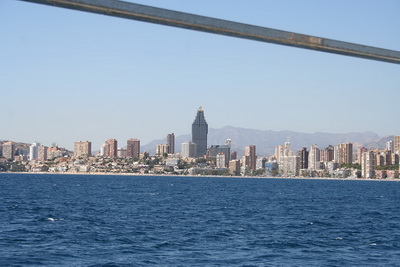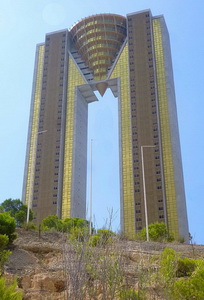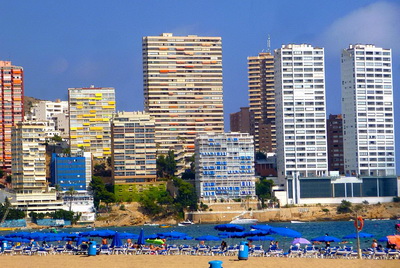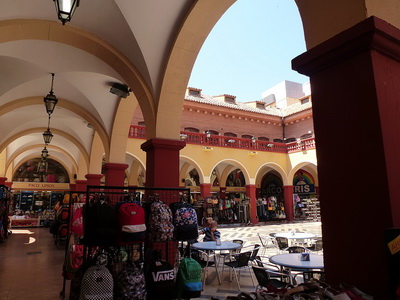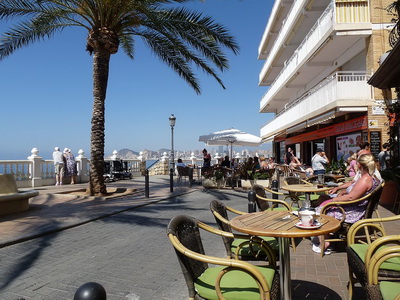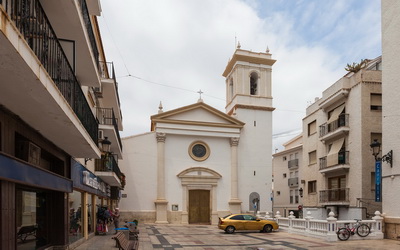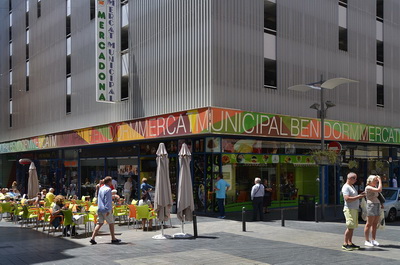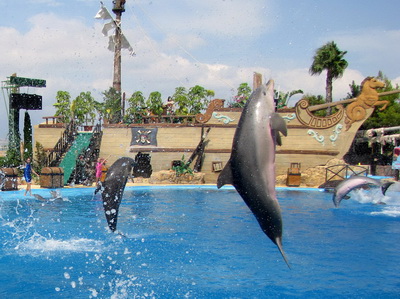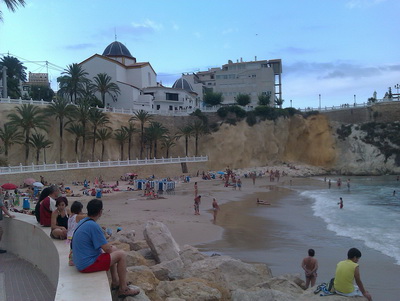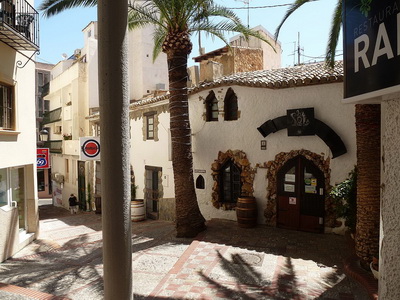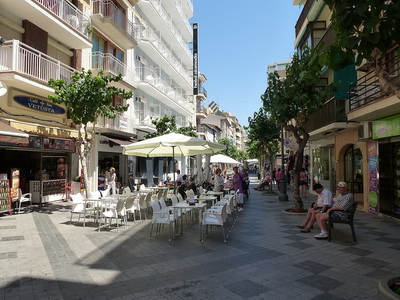Benidorm
Benidorm is, quite simply, the tourist capital of the Costa Blanca and, in some ways, the whole of south-eastern Spain, and can be said to embody the success of the tourist industry on all of the Spanish Costas since the mid-20th century.
What was once a small and historic fishing community, nestling in the shadow of the Serra Gelada mountains at the Benidorm north of the bay, is now the town with most skyscrapers in the whole of Spain and the municipality with most skyscrapers per inhabitant in the whole world, earning it the nickname “the New York of the Mediterranean”. Throughout Europe it is synonymous with sun-and-sand tourism, a reputation which has been enhanced by the award-winning television series of the same name in the UK.
Given this reputation and the impression given in the TV series it comes as something of a surprise to discover that only 3,200 of the 69,000 inhabitants are UK nationals, although they do form an important part of the 10,000-strong EU expat contingent. However, this is logical in a way: tourism in Benidorm is very much of the holiday variety rather than being residential in nature (as is the case in many other parts of the Costa Blanca), and a large year-round Benidormworkforce is required to staff the 140-plus hotels which are clustered along this stretch of the coastline. Only Madrid and Barcelona have more hotel rooms in Spain.
The sheer scale of Benidorm is impressive in many ways, apart from the height of the buildings and the number of hotels: 11 campsites, 300 restaurants, 500 bars, 150 disco-bars, and, most of all, a population which swells to 400,000 during the peak summer period as hordes of visitors arrive from both northern Europe and the rest of Spain. If it were permanent, this would make it the eighth largest city in the country.
Yes, Benidorm is popular with the Spanish too, and is a favourite destination for winter weekend getaways, especially since the opening over the last twenty years of five huge theme parks just outside the town. These are Terra Mítica, Aqualandia (the largest water park in Europe until 2008), Aqua Natura, Terra Natura and Mundomar, all Benidormof which have combined to add to the already considerable attractions of Benidorm.
Initially, and it seems like a long time ago now, those attractions consisted purely of an ideal location close to the then new airport of Alicante, with mountains standing just a few kilometres inland and to the north of a huge swathe of golden sand. This beach was broken only by a small rocky outcrop on which a partially ruined castle stood.
Lest it be forgotten, it is important to point out that those features still exist today, although they tend to be obscured by others which have arrived since the 1960s. Despite all the distractions, especially the night life, the main attraction of Benidorm is still the beaches, especially the 2-kilometre Playa de Levante, the Playa de Poniente and the Playa de Mal Pas, although the two smaller coves of Tío Chimo and La Almadrava are also popular.
Although it might seem almost inappropriate for a town so representative of modern life and international travel , Benidorm also has a long history, having been founded not long after the Reconquista in 1325, when the castle was first built. This defensive fortress was called into use to withstand frequent Berber pirate raids over the following Benidormcenturies, and these attacks eventually resulted in the town becoming deserted by the early 16th century.
By the 18th century, though, it had been re-established, and by 1800 the population had climbed to 2,700 as tuna fishing proved to be a rewarding occupation. Benidorm’s true vocation, though, has turned out to be tourism, and since 1950 the population has risen spectacularly from 3,000 to its current level.
In most of the Costa Blanca it is important to bear in mind certain times of the year as they are marked by the local fiestas, but while this is true to a certain extent in Benidorm the truth is that in the “city which never sleeps” there are celebrations the whole year round! Especially noteworthy, however, are the Benidorm Carnival in February, the Fiestas in honour of Virgen del Sufragio and San Jaime in November (these are followed by the Fiesta del Alcachofa, or the artichoke fiesta), the Fallas in March and the Fiesta de la Cruz in early May.
Purists will maintain that Benidorm is not representative of the Costa Blanca and the “real Spain”, or even of the Marina Baja area of which it is the capital, and they are of course right. This, though, is no reason to refuse to appreciate the town for what it is, and if the aim of tourism is to experience something different then maybe this explains Benidorm’s popularity among the Spanish as well as the enduring love affair of British tourists with the Mecca of the Costa Blanca which they helped to create.

